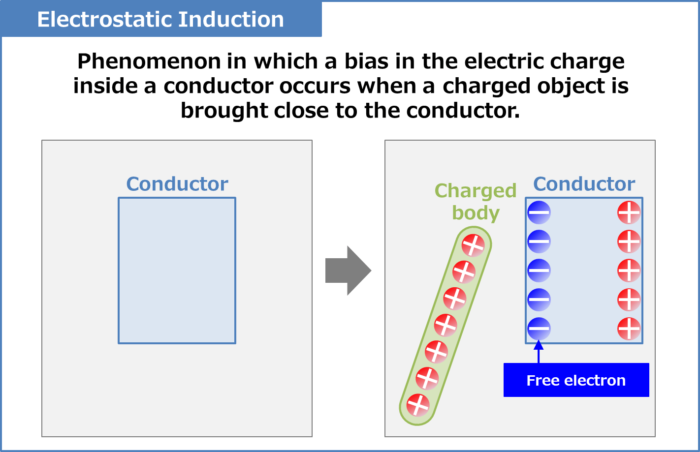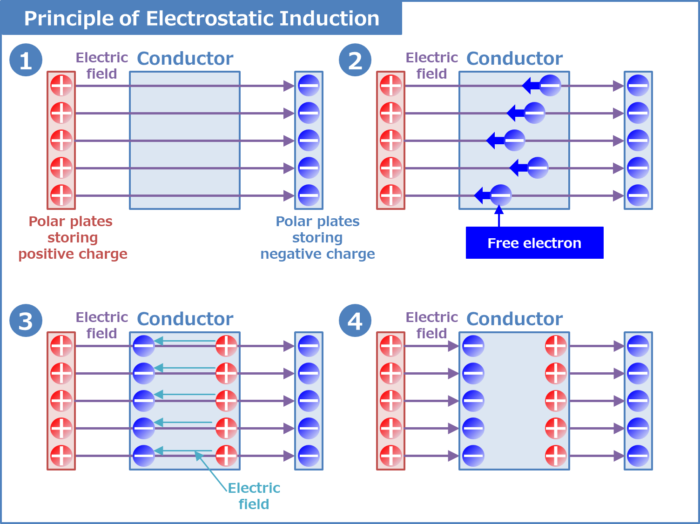Regarding the Electrostatic Induction, this article will explain the information below.
- Explanation of Electrostatic Induction
- Principle of Electrostatic Induction
Electrostatic Induction

Electrostatic induction is a phenomenon that occurs when a charged body is brought close to a conductor, causing a bias in the charge inside the conductor.
Inside a conductor (a material that conducts electricity, such as a metal) are free electrons. Free electrons are electrons that can move freely inside the conductor and have a negative charge. Therefore, when a charged body is brought close to a conductor, the free electrons inside the conductor are subjected to electrostatic force and move.
As a result, the inside of the conductor near the charged body generates a charge different from that of the charged body, while the conductor far from the charged body generates the same charge as the charged body. This phenomenon of biased charge inside a conductor caused by bringing a charged body close to the conductor is called electrostatic induction.
For example, in the above figure, a positively charged body is approached from the left side of the conductor. In this case, the left side of the conductor (the side closer to the charged body) is negatively charged and the right side of the conductor (the side farther from the charged body) is positively charged.
Supplement
The closer the charged object is to the conductor, the greater the amount of free electrons that move, and thus the greater the charge bias.
Principle of Electrostatic Induction

The principle of electrostatic induction is explained in the following four steps. To make the explanation easier to understand, let us consider the principle when a conductor is inserted between "a polar plate storing a positive charge" and "a polar plate storing a negative charge.
Principle of Electrostatic Induction
- An electric field is generated between the pole plates in the direction from positive charge to negative charge. Therefore, when a conductor is inserted between the pole plates, an electric field is applied to the conductor.
- There are free electrons inside the conductor. Therefore, when an electric field is applied to a conductor, the free electrons inside the conductor are subjected to electrostatic forces and move in the opposite direction of the electric field. The direction in which the free electrons move is the direction in which they are attracted to the positive charge.
- Free electrons inside the conductor move until they cancel out the electric field from outside. In the above figure, the left side of the conductor is negatively charged because the free electrons are moving to the left side of the conductor. On the other hand, the right side of the conductor is positively charged because there are fewer free electrons. As a result, there is a bias in the charge inside the conductor. At this time, an electric field is also generated inside the conductor.
- The electric field inside the conductor is zero because the "electric field from outside" and the "electric field inside the conductor" cancel each other. Since there is no electric field inside the conductor, the inside of the conductor is equipotential. Note that the lines of electric force exit from the positive charges induced on the conductor surface, and the lines of electric force enter the negative charges. Also, the lines of electric force are oriented perpendicular to the conductor surface.
Summary
This article described the following information about "Electrostatic Induction".
- Explanation of Electrostatic Induction
- Principle of Electrostatic Induction
Thank you for reading.